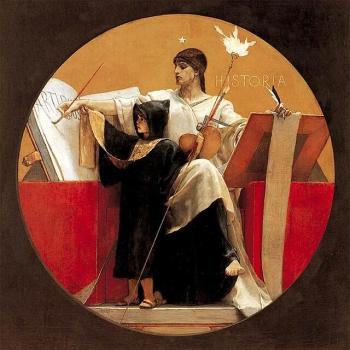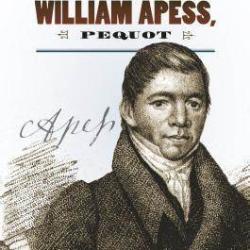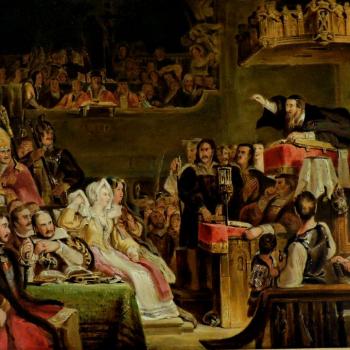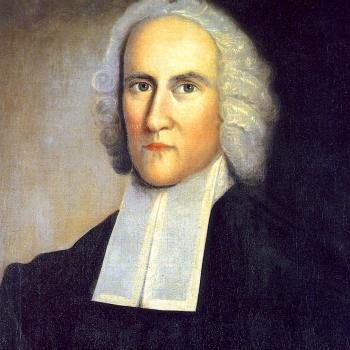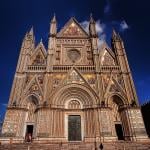How should we interpret Hurricane Sandy, blowing near Salem, Massachusetts, in the days before Halloween? Might it be read providentially, as it could have been read by the colonists who made the place famous by their treatment of witches? Or is it really an enhancement of Halloween, tempestuous winds to make the party spookier and spirited?

Halloween is one of the local specialities of eastern Massachusetts. In popular American observance Halloween means witches, and Salem has them on offer. The marketing of Salem witchcraft presents a curious case of the uses of the past. In its barest details, the 1692 Salem episode led to the executions of 20 people accused as witches. The outbreak occurred in a period of social and political turmoil in the Massachusetts Bay Colony. Although there were witchcraft panics elsewhere in colonial America, and thousands were executed as witches in Europe during the seventeenth century, the 1692 Salem events have generated reams of scholarship. Historians have sought explanation in everything from spoiled harvests to economic inequality, from fear of Native Americans to pernicious ideas about gender.
Then why is Salem so happy at Halloween? The city that marks America’s most famous witchcraft episode uses it to stake claim to occult realms, as a branding device. Identification with historical events really matters to Salem. Without the witches (whom we assume were not actually witches), there is no justification for all the sorcery shops and pointy hats. Some institutions tack close to the historical record, like Cry Innocent!, a drama presented by Gordon College students, recalling the trial of Bridget Bishop. But many others claim 1692 to set it alongside the riotous costume party staged every October. Decades ago Laurie Cabot, the city’s Official Witch, took up residence and set out a shingle, opening a witch-goods store in 1971. Witchcraft turned out to be good for business. It drew tourists and refurbished the local economy. The city launched Haunted Happenings over thirty years ago, a month-long festival featuring full-moon cruises, face painting, haunted houses, magic shows, and celestial dancing. It is only scary in order to be fun, and all that fun flings coins into local coffers.
The appeal for children is relatively obvious: goofy outfits and free candy. The appeal of Halloween for adults is harder to pin down. In a New York Times opinion piece, Bess Lovejoy suggests that we enjoy the holiday because we are so put off by death. She argues that unlike people centuries ago who held death all around them—Christians honoring saints’ body parts as relics, loved ones saving the hair of deceased relatives —we remove it as far as we can. Real death, the decomposing of the body, terrifies us. So we play at it at Halloween.
This strikes me as plausible. Many may make sport at cartoonish dying but the real, sorrowful death of a person is hard to integrate with this festival. For this reason one Haunted Happenings event seems especially odd, the Mourning Tea. The party is hosted by two buxom witches promising recitation of “odes to the somber beauty of Death’s final waltz” intoned over finger sandwiches and sweets, tea served loose to facilitate leaf-reading at the end. Guests are invited to bring photos and stories of the dead they wish to remember. Tickets are $50.
Halloween is more kitschy than scary, but I understand why some churches will have none of it. Recognizing the appeal of Halloween to children, but disliking its traffic with demons and wizards, churches sometimes coopt it with a Fall Fest, Harvest Party, or All Saints’ Fair replete with candy and costumes. Or it could be celebrated under auspices of Reformation Sunday, recalling Martin Luther’s October 31, 1517 posting of 95 theses. (Not having grown up in a tradition observing this feast, I am embarrassed to admit that when I first met a Reformation Sunday in church, I did mistake it for an American Protestant substitute for Halloween.) The Anglican church my family attends now celebrates the Feast of All Souls with a requiem, remembering and praying for those who have died in the past year. This part of the requiem prayer seems especially appropriate as the hurricane rages:
Free me, Lord, from eternal death, on that day of dread, when the heavens and earth shall move.



